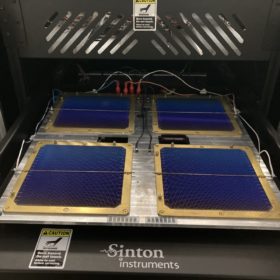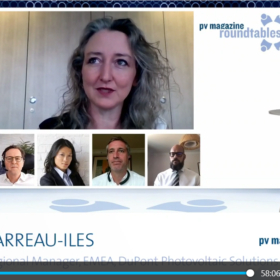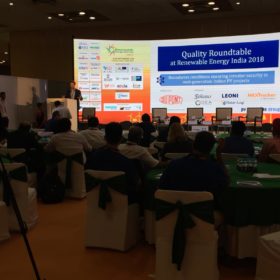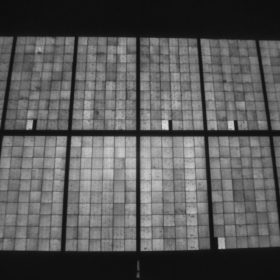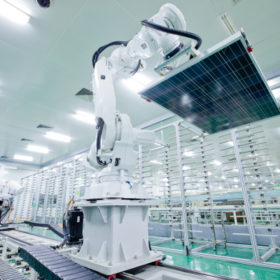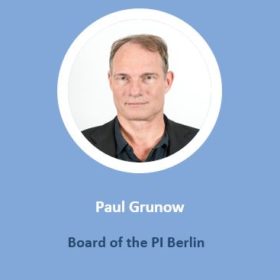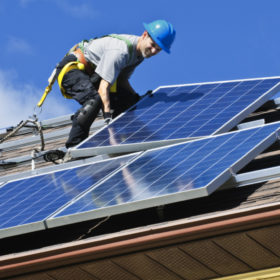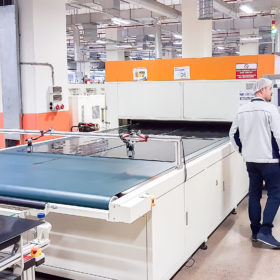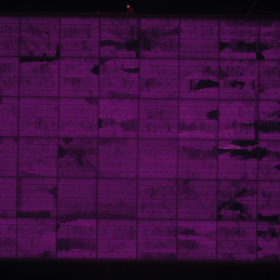The Solar Tech Check: Toward 50-year modules, and how the numbers add up for HJT
This week sees new technoeconomic analysis published on different aspects/materials for heterojunction: Important to consider as Europe in particular looks to be betting big on this technology for its manufacturing comeback. And a new report from NREL in the United States examines progress in degradation and durability to increase module lifetimes.
New three-step module testing from TÜV Rheinland
German standards body TÜV Rheinland is introducing a new testing and certification program for pv modules. The program incorporates component specific tests and ongoing, random testing of running production lines. Hanwha Q Cells assisted in the development of the program, and this week announced it is the first manufacturer to receive the new Quality Control PV Certification.
pv magazine’s Roundtables go virtual and reach a global audience
The COVID-19 pandemic featured prominently at this week’s inaugural pv magazine Virtual Roundtables Europe, which took place this past Tuesday and Wednesday. Not only did the pandemic lead to the virtualization of pv magazine’s established June Roundtables, but it was a big topic in the final session on Wednesday dealing with markets and specifically the further development of Power Purchase Agreements (PPAs) in Europe.
Have your say on NSEFI best practice guidelines for utility scale PV
The National Solar Energy Federation of India (NSEFI) is continuing to step up its efforts to ensure the quality of large scale solar projects. The body is now looking for stakeholder input into its new best practice guidelines for PV power plant projects, as a part of its ongoing Quality Taskforce initiative.
How cold solder joints turn solar modules into warranty cases
In the run-up to pv magazine’s quality roundtable at Intersolar Europe, we look at a case where a production error resulted in cold solder joints in 5% of the solar modules across a 50 MW project portfolio. We consider how to come to an agreement with a manufacturer to replace modules in such a situation and how such a solution compares with a production audit before installation.
Pre-webinar interview: Bifacial PV – glass-glass or glass-backsheet?
In preparation for the next pv magazine webinar “New approach for bifacial modules and yield expectations” on Monday 29 April, 2pm – 3pm (CEST), Andrea Viaro, head of technical service Europe, JinkoSolar and Lucie Garreau-iles, technical manager, EMEA, DuPont, in the following answer the questions by pv magazine on why create an alternative to the bifacial glass-glass-modules
Webinar Q & A: How can investors mitigate the risk of LID and LeTID?
What is your recommendation for investors when buying PERC modules? Can LeTID loss be completely recovered in the field? Can one be sure that there is no LID and LeTID in n-type cells? Presenters, Andrea Viaro, head of technical service Europe, JinkoSolar, Stefan Roest , CTO, Eternal Sun & Spire Solar and Paul Grunow, technology consultant, board of the PI Photovoltaic Institute Berlin AG answer these and other questions from a recent pv magazine webinar.
Victoria to require installers to sign CEC’s Code of Conduct for Solar Homes
The Victorian government is giving smaller solar installers eight months to sign up to the Clean Energy Council’s Solar Retailer Code of Conduct if they want to qualify for the Solar Homes program. For larger retailers, the deadline to become Approved Solar Retailers is July.
PI Berlin: Asia leading the way for module quality
Quality assurance provider PI Berlin has found the solar industry has made significant improvements to module quality in the past six years and that, perhaps surprisingly, manufacturers in China and South East Asia are setting the standard by producing higher quality modules, on average, than other regions.
Filling in the (micro)cracks
Whether caused by improper production processes, poor treatment in transport and installation, climate conditions or any other issue, performance reducing microcracks are a major source of stress for PV developers and project owners. Now, an EU funded research project has found that a different type of stress could provide a solution, and even “heal” some existing cracks.
